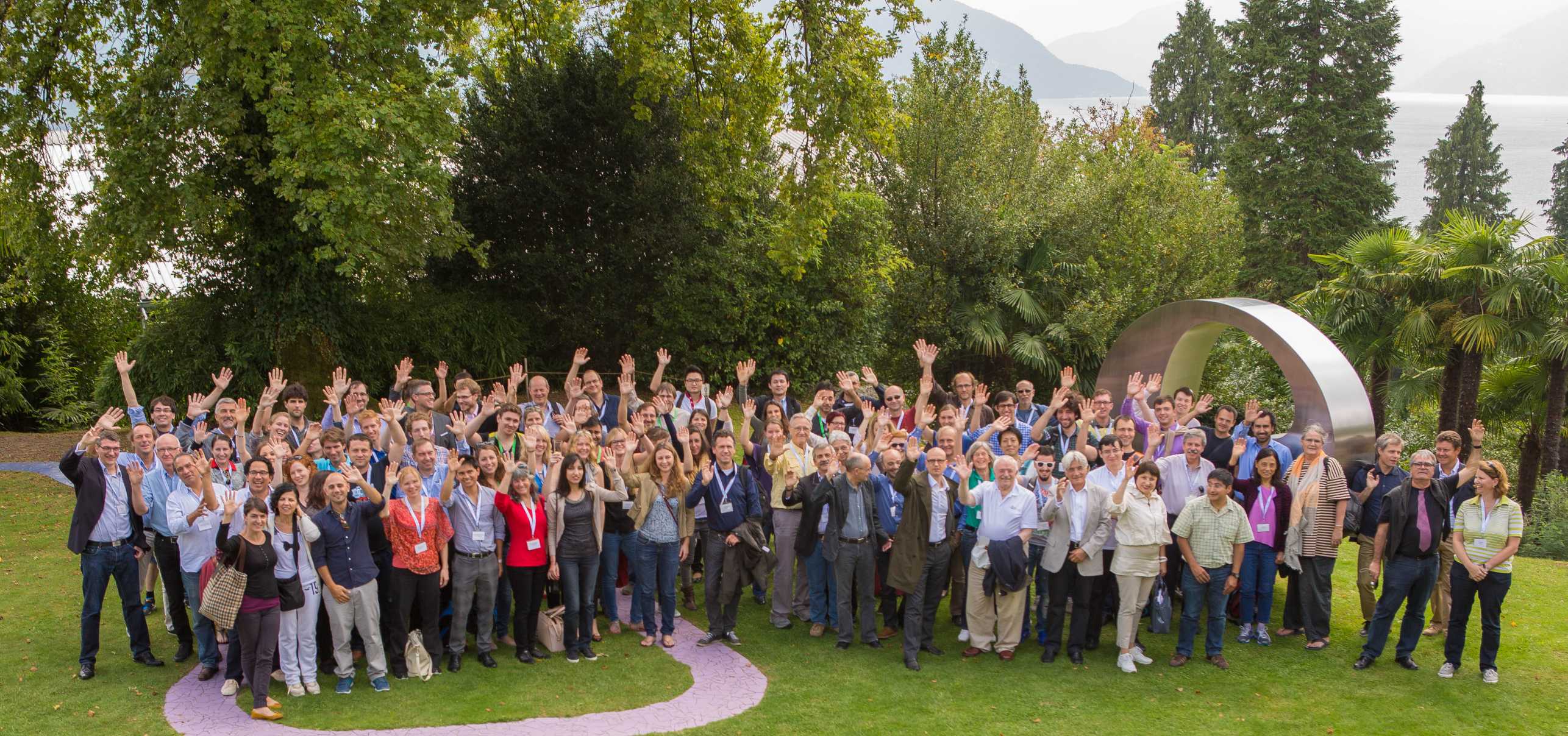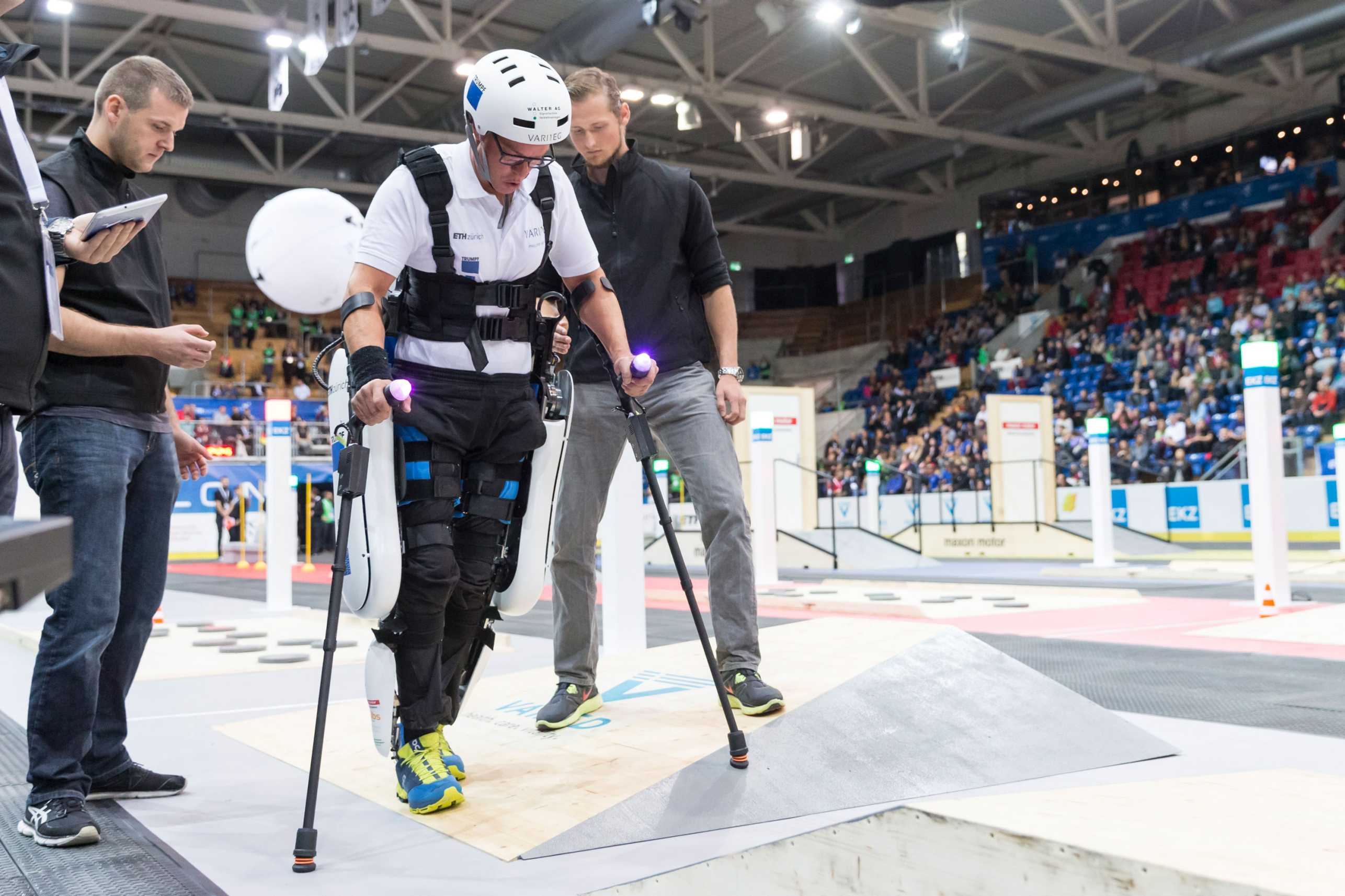Project Highlights
Neurocognitive robot-assisted therapy of hand function
Our new study shows that robot-assisted therapy of hand function after stroke is as successful in improving upper limb function as conventional therapy. This opens new avenues in technology-assisted stroke therapy.
Hand function is often impaired after stroke, affecting the execution of daily activities. Robotic devices can complement rehabilitation therapy offered to persons who suffered a stroke, but they rarely focus on the training of hand sensorimotor function. The primary goal of our study was to evaluate whether robot-assisted therapy of hand function following a neurocognitive approach (i.e., combining motor training with somatosensory and cognitive tasks) produces an equivalent decrease in upper limb motor impairment compared to conventional neurocognitive therapy.
A randomized controlled trial in 33 participants with stroke was conducted. 14 subjects in the robot-assisted and 13 subjects in the conventional therapy group completed the study. At the end of intervention, all subjects showed decreased upper limb impairment and improved sensorimotor function. Statistical analyses established equivalence between robot-assisted and conventional neurocognitive therapy.
Neurocognitive robot-assisted therapy of hand function allows for a non-inferior motor recovery compared to conventional dose-matched neurocognitive therapy when performed during inpatient rehabilitation in the subacute stage. This enables early familiarization of stroke patients with such technologies, realizing a first step towards minimally-supervised robot-assisted therapy in the clinic and also at home after discharge. Such an approach could help increase therapy dose and maintain functional gains over time.
RELab tenoexo – actuated hand exoskeleton for therapy and assistance in daily life
RELab tenoexo is the latest prototype of our hand exoskeleton to provide grasping assistance to individuals suffering from moderate to severe hand impairment. It integrates optimized technologies and insights gained from the past 4 years of development and user testing, buildig on the initial finger design of Prof. Jumpei Arata during his sabbatical at RELab in 2010. The compliant finger mechanism and the thumb module allow for opposition and execution of various grasp types (video: external page functions and grasp types). The compact, lightweight design and numerous features to increase the user friendliness enable use in therapy and/or for assistance in daily life (video: external page tenoexo setup, donning and doffing). tenoexo can be trained and controlled intuitively by electromyography or other input modalities and offers the potential to support and increase residual motor function (video: external page gesture classification training routine). More information on the RELab hand exoskeleton can be found on the project page.
Insights from the first CYBATHLON
In October 2016, sixty-six international pilots and their teams came together to compete in the world’s first CYBATHLON, a championship for people with disabilities using advanced robotic assistive devices. Two days before, the scientific community met at the CYBATHLON Symposium to discuss recent progress and challenges in the field. Roger Gassert and Olivier Lambercy highlight the main insights from these events in their external page blog post, which are further elaborated in a external page thematic series on the CYBATHLON, published in the Journal of NeuroEngineering and Rehabilitation. The thematic series includes a publication on our CYBATHLON experience with the external page VariLeg exoskeleton.
Hand, Brain and Technology: the Somatosensory System

We invite you to the second Hand, Brain and Technology conference on Monte Verità, Switzerland, this time focused on the somatosensory system!
Abstract submission deadline: April 15
Conference dates: August 26–31
Further information can be found here.
Season's Greetings 2017
As the year comes to a close, we thank all of our collaborators and supporters for their partnership in 2017, with a series of pictures of our research projects.
The photos in this video are the result of research projects carried out in collaboration with our partners at Balgrist Tec, Balgrist University Hospital, Clinica Hildebrand Centro di Riabilitazione Brissago, ETH Zurich, Hasselt University, Hocoma AG, University Hospital Zurich and the University of Zurich. You can find further information on these projects on the research page of our website as well as in the monthly highlights below.
We wish you happy holidays and an exciting 2018! The RELab
Der nächste Schritt – Werner Witschi und das VariLeg Exoskelett
Der nächste Schritt – ein bewegender Film über unsere Zusammenarbeit mit Werner Witschi im Rahmen des VariLeg Projekts. VariLeg ist ein Exoskelett mit variabler Kniesteifigkeit, welches Menschen mit Querschnittslähmung erlaubt, wieder zu gehen. Es wurde im Rahmen zweier Fokusprojekte an der ETH für die Teilnahme am CYBATHLON 2016 und die Erforschung des Einflusses dieser variablen Steifigkeit auf die Gehstabilität und Effizienz entwickelt. Das Video entstand im Rahmen einer sechsteiligen external page Präventionskampagne der Schweizerischen Unfallversicherung Suva (DE/FR/IT).
The next step – a touching video about our collaboration with Werner Witschi on the VariLeg exoskeleton. VariLeg is an exoskeleton for paraplegics, developed to participate in the CYBATHLON 2016 and to investigate the effect of variable knee stiffness on gait stability and efficiency. The video was realized in the context of a six-part prevention campaign by the Swiss National Accident Insurance Fund Suva.
Read more about the VariLeg project.
ETH Knee Perturbator: An Exoskeleton for Perturbing the Knee during Gait
The ETH Knee Perturbator is a powered exoskeleton that was designed to apply precisely timed position perturbations to the knee joint during gait. With measures of the perturbation and the corresponding interaction torques, we aim to probe the neuromechanics underlying human locomotion. This information can be used to improve our understanding of typical and atypical joint behaviors, and to improve the design and control of gait assistive devices.
The design and characterization of the ETH Knee Perturbator is presented in the current issue of the external page IEEE Transactions on Biomedical Engineering, and included in their external page October 2017 Feature Articles.
Sensor-Based Home Therapy System
ArmeoSenso (research version) is a sensor-based home therapy system for self-directed neurorehabilitation of the upper extremity. It was developed in the context of a collaboration between the University Hospital Zurich, the Balgrist University Hospital, ETH Zurich and Hocoma AG, supported by the Swiss Commission for Technology and Innovation. The system includes unique features, such as a pragmatic recalibration approach to cope with sensor limitations, clinical intelligence to detect and prevent compensatory movements, as well as assessment-driven difficulty adaptation, based on workspace and target reaching assessments. Feasibility was evaluated in a external page clinical pilot, in which 11 stroke survivors used the system at home in an unsupervised manner over a period of six weeks, showing high overall acceptance and high therapy intensity in some users. Hocoma AG has continued the development of this unique approach and recently announced a external page commercial version of ArmeoSenso.
